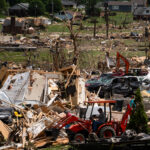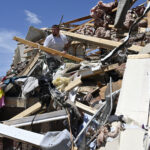When the next big earthquake strikes California, it’s unlikely to hurt the insurance industry as much as the last one did.
The nation’s largest property insurers curtailed their exposure to California quakes a decade ago when they persuaded state lawmakers to shift most of the risk to a state-run agency, the California Earthquake Authority, or CEA.
The privately funded CEA began selling policies in 1996 — two years after a 6.7-magnitude quake in Northridge caused insurers to conclude they couldn’t afford to provide earthquake coverage in California.
Today, 86 percent of the state’s homeowners have no earthquake insurance. CEA officials are hoping this month’s 100th anniversary of the 1906 earthquake that destroyed San Francisco, along with the lessons of Hurricane Katrina, will prompt more to sign up.
“The story of earthquake insurance in California is one of cut and run,” said Doug Heller, executive director of the Foundation for Taxpayer & Consumer Rights, a frequent industry critic.
Insurers emerged from the Northridge quake with a $12.5 billion bill, raising fears they would be wiped out completely if an even bigger temblor were to hit one of the state’s major metropolitan areas. As it was, the Northridge quake nearly bankrupted 20th Century Insurance, now known as 21st Century Insurance.
To help launch the CEA, California insurers chipped in $750 million in initial funding and agreed to pay up to $3.6 billion to help the agency cover claims in a catastrophic quake.
The industry’s exposure to a California quake will shrink by about $2.2 billion in 2008 when most of its financial commitment to the CEA is scheduled to expire.
The CEA provided a practical solution to an intolerable situation, said Jerry Davies, a spokesman for the Personal Insurance Federation of California, whose members include State Farm Insurance and Farmers Insurance.
“When you don’t understand insurance, it’s easy to be critical,” Davies said.
By backing the CEA, insurers would be able to continue selling basic homeowners coverage — historically a profitable niche.
California law requires a separate earthquake policy to be offered along with homeowners. Insurers say this requirement led homeowners living near faults to accept the quake coverage while property owners in less risky neighborhoods declined.
The industry didn’t rebel until after Northridge, when carriers representing about 93 percent of the California homeowners’ market either stopped writing new policies or imposed severe restrictions to avoid offering earthquake coverage.
Those constraints prompted lawmakers to create the CEA, which relies on a combination of policyholder premiums, industry backing and reinsurance to cover possible claims.
The agency estimates it could cover up to $7.5 billion in claims. If the total amount of insured damage exceeds that amount, the CEA is allowed to trim payments due to its policyholders.
Hurricane Katrina, by comparison, cost the insurance industry an estimated $38 billion, according to the Insurance Information Institute, while the Sept. 11 attacks led to nearly $19 billion in claims.
There are a few insurers that continue to offer earthquake coverage outside the CEA. The largest of these are Geovera Insurance and Pacific Select Property Insurance, with account for a nearly 10 percent share of California’s earthquake insurance market. But neither sells homeowners insurance, giving them the flexibility to be more selective about where they provide earthquake coverage.
“They can cherry pick their policyholders and decline to insure the highest risk areas,” Heller said.
Was this article valuable?
Here are more articles you may enjoy.

 Trump Administration Targets Resiliency Funds to Shrink FEMA’s Role
Trump Administration Targets Resiliency Funds to Shrink FEMA’s Role  Central US Severe Weather Outbreak Caused Billions in Damages, AccuWeather Says
Central US Severe Weather Outbreak Caused Billions in Damages, AccuWeather Says  Plane Crashes into San Diego Neighborhood, Setting Homes And Vehicles on Fire
Plane Crashes into San Diego Neighborhood, Setting Homes And Vehicles on Fire  Cars Are Getting Smarter. Why It Matters for Claims Professionals
Cars Are Getting Smarter. Why It Matters for Claims Professionals 